Moments
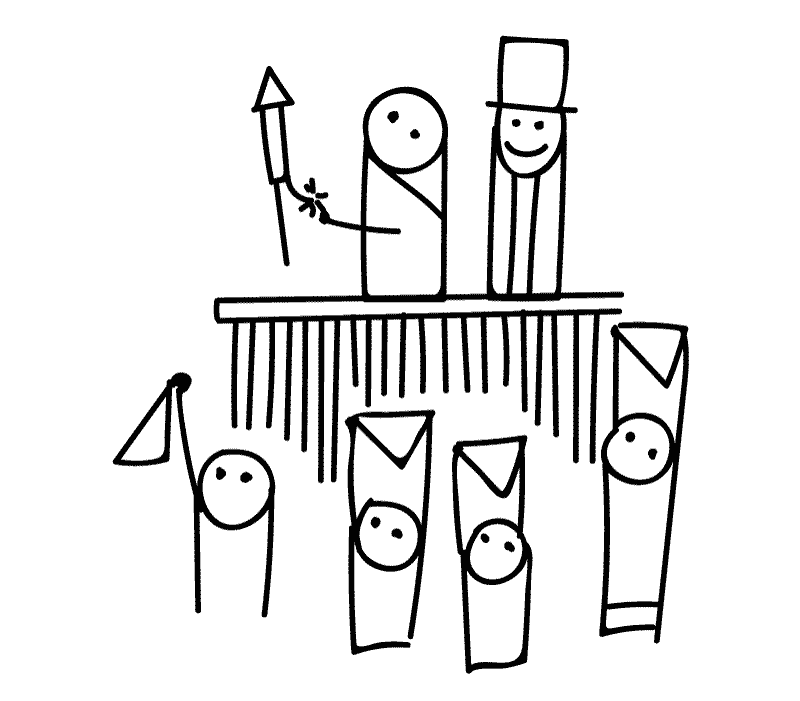
Chupinazo
The fiestas of San Fermin start on 6th July at 12h with the Chupinazo, a rocket announcing the start of festivities, launched from the main balcony of the city hall.
The chupinazo is the rocket that announces the fiestas, which kicks off the start to 204 hours of uninterrupted partying. The start of the fiestas is one of the most iconic and popular events in the programme.
It is a relatively modern event. The first was launched in 1941 after a proposal to do so was made by the deputy mayor Joaquin Ilundain and the journalist Jose Maria Salazar. However, and according to local legend, it was Juan Etxepare, the owner of a tobacco shop in the Calle Mayor, who was the first to request and obtain permission from the City Government of Pamplona in 1931 to launch rockets at 12 noon on 6th July in the street, surrounded by youngsters.
Nowadays, more than 12,500 people come together in the Plaza del Ayuntamiento (which measures 2,502 square metres) to listen to the inaugural speech and wait for the rocket to be launched.
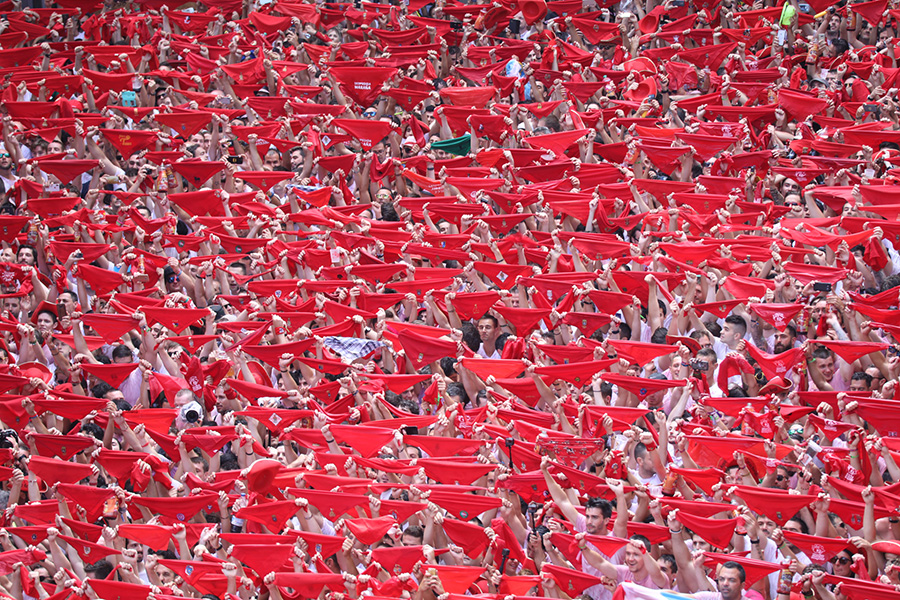
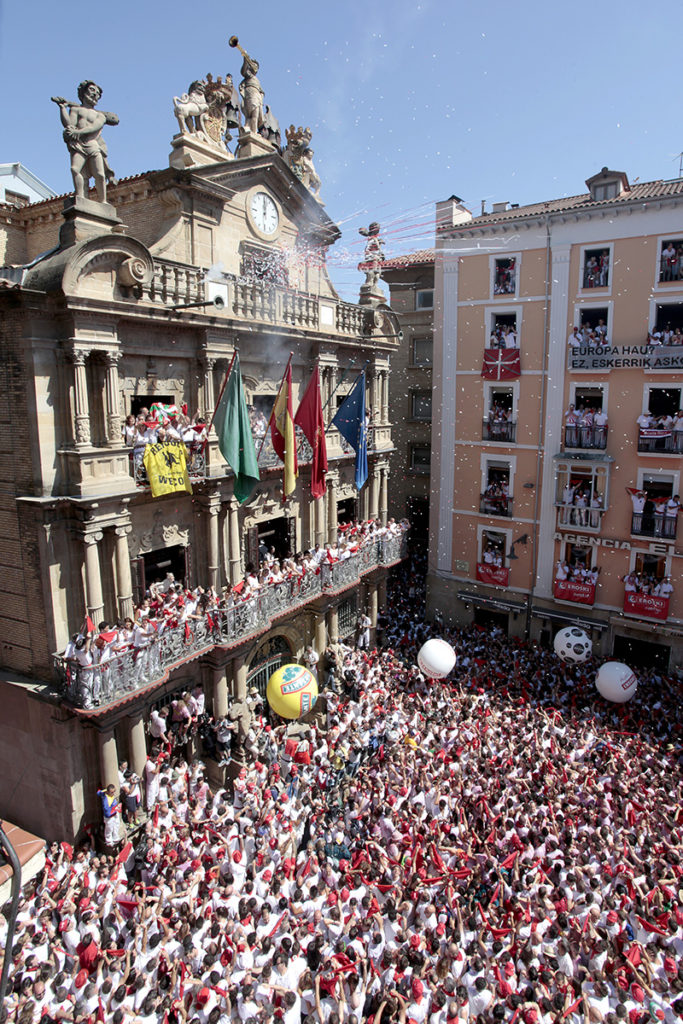
What is it like?
Three minutes after noon, the person responsible for lighting the fuse goes onto the balcony accompanied by a municipal representative and a manager of Caballer, rocket manufacturer.
The lads and the girls, while they wait, chant ‘San Fermin!, San Fermin!, iSan Fermin!’, and raise their red neckerchiefs on high, which they then tie to their necks when the fiesta commences.
Buglers announce the moment and after the traditional bilingual greeting in Spanish and Basque, and with some variants according to who throws it, the elected individual proclaims the traditional:
‘Pamploneses, pamplonesas… ¡Long live San Fermín! ¡Gora San Fermin!’.
The opening event of the fiestas can also be followed from areas nearby the plaza and, with less of a crush, from other parts of the city via giant screens placed by the City Government in Paseo Sarasate, Plaza de los Fueros and Parque de Antoniutti.
Procession
The Procession on July 7 is perhaps one of the most deeply rooted traditions of the Sanfermines, since its origin dates back to the 13th century, when Pedro de París, also known as Pedro de Artaxona, was bishop of the city.
The mayor, the councilmen and councilwomen, dressed in full dress, leave the Town Hall towards the Cathedral to pick up the Chapter, who will preside over the procession in honor of the Saint. Then they go to the church of San Lorenzo to pick up the statue of San Fermin and begin the procession through the streets of the center for about an hour and a half.
They are accompanied by the wood and papier mache figures of the Gigantes y Cabezudos, clarinettists, wardens, txistularis, dantzaris, timbaleros, representatives of historical guilds, the Hermandad de la Pasión and the congregación Mariana. The procession ends with a performance by the La Pamplonesa municipal band.
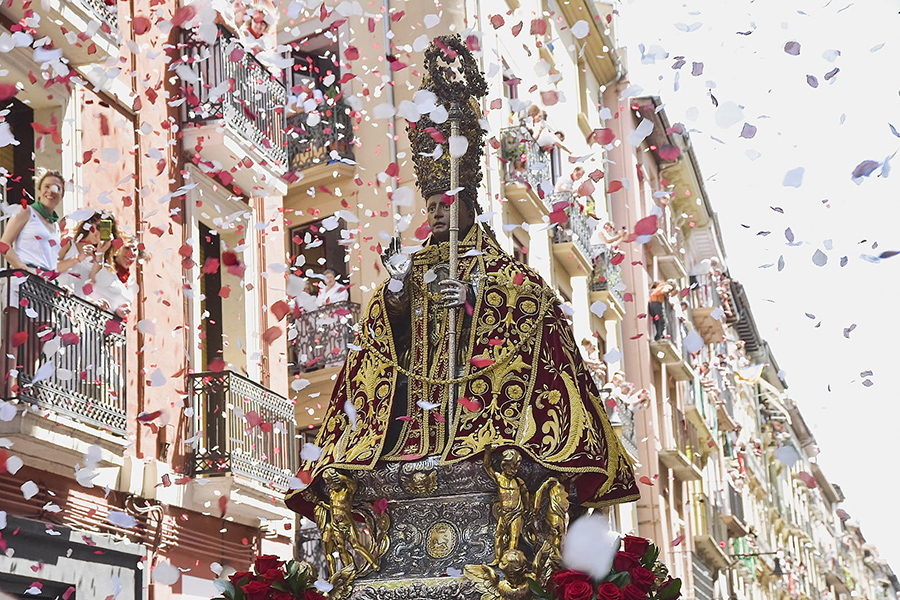
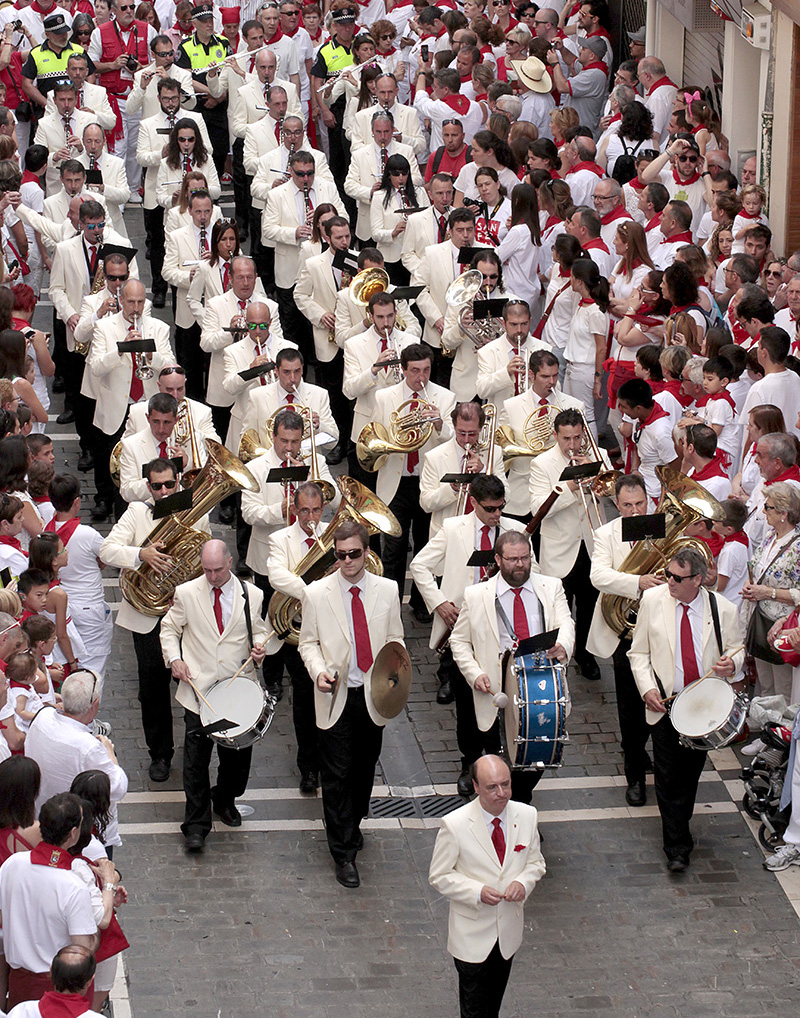
The most moving aspect of the procession are the pauses made along the route. These are called the ‘momenticos’, stops when the opportunity is taken to pay special homage to the saint.
After the return of the procession to the church of San Lorenzo, the archbishop holds the mass, after which the City Corporation accompanies the Chapter once again to the cathedral. There the gigantes dance in the atrium of the Cathedral to the sound of flutes and bagpipes, while church bells, bugles and La Pamplonesa municipal band play. The second largest bell in Spain (the “Maria”, weighing 12,000 kilos and made in 1584) is a notable feature of this performance.
The Corporation then returns to the City Hall to the song ‘Asombro de Damasco’ y and the dancers make their farewell among the crowd with one final dance in the Plaza Consistorial.
Poor me
The sanfermines officially end on July 14th at midnight with the ‘Poor me’ amidst candles and chants sung by the people who congregate in the town hall square and bid farewell to the fiestas until the following year.
The Poor me is the mother of all farewells, because throughout the day adioses are repeated, on the 14th the last encierro takes place in the morning, the goodbye to the gigantes y cabezudos at midday and the last bullfight of the week in the evening.
The Poor me is the mother of all farewells, because throughout the day adioses are repeated, on the 14th the last encierro takes place in the morning, the goodbye to the gigantes y cabezudos at midday and the last bullfight of the week in the evening.
From the balcony of the Town Hall, the mayor announces the official end of the Sanfermines and declares the ‘Ya falta menos’, the countdown to next year’s fiestas.
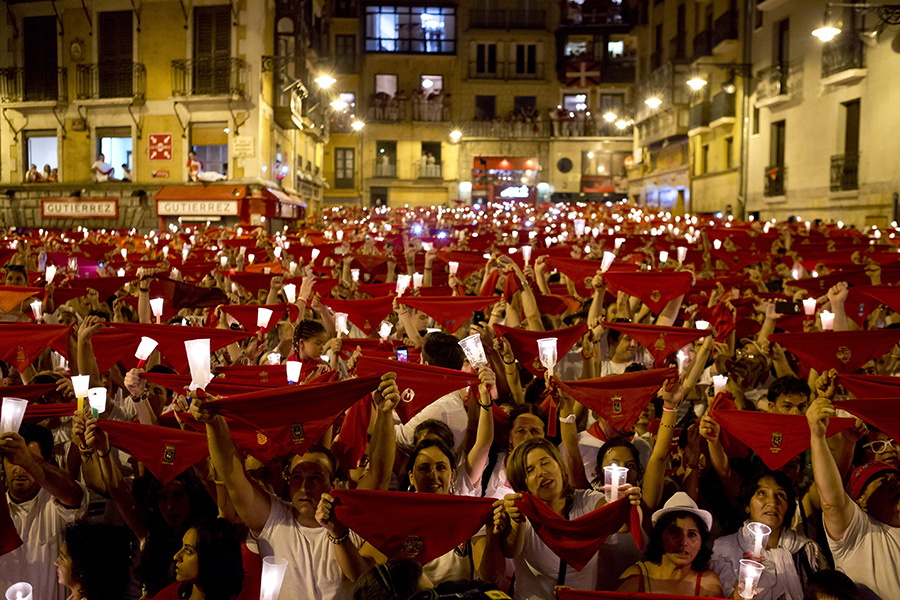
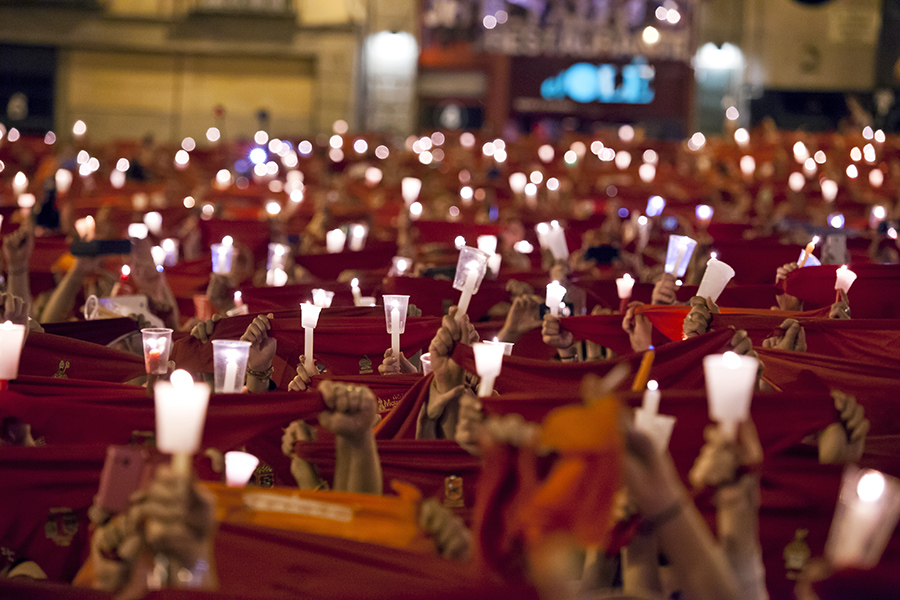
One of the most exciting moments comes when all the people present, at 12 o’clock at night, take off their handkerchiefs and raise them, holding their beaks with both hands. They sing ‘Pobre de mí’ (Poor me) which goes like this
“Poor me, poor me, the Fiestas of San Fermin are over”
Immediately after, they began to sing different Sanferminero songs and ‘Ya falta menos’. The fiestas of San Fermin have officially ended.
As well as in the Plaza del Ayuntamiento, this act of farewell can be seen in the Plaza del Castillo, thanks to a giant screen showing the ‘Pobre de mi’. The peñas usually select this location for their goodbye to San Fermin. In a procession in the opposite direction, after the Pobre de mi, many locals and visitors go to the railings of the Church of San Lorenzo, where the Saint remains in the chapel, to leave their candles and neckerchiefs in a ceremony of homage and farewell.
